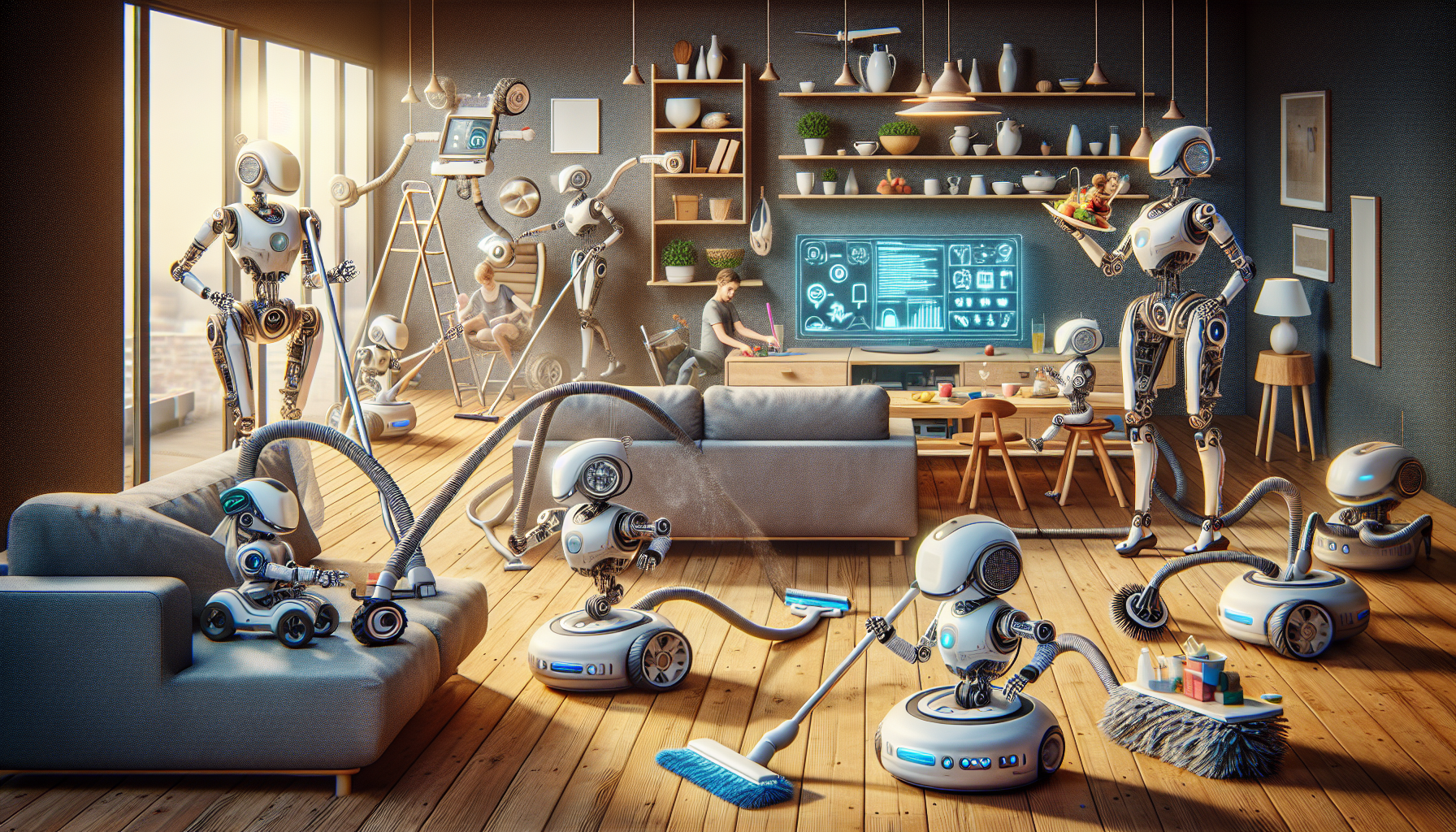Understanding the Role of Robot Servants in Daily Life
Robot servants are quickly becoming an integral part of our households. They serve a variety of functions that can make daily tasks easier and more efficient, providing more time for people to focus on what they love. As technology continues to evolve, we are seeing a rise in the capability and availability of these intelligent helpers.
The Evolution of Household Robots
When we think about robot servants, it’s easy to imagine something straight out of a science fiction movie. However, the reality is that robot technology has come a long way. The first wave of household robots consisted of simple machines like robotic vacuum cleaners. These devices were primarily designed to take on mundane tasks, but they laid the groundwork for more advanced technologies.
Early Innovations
In the early 2000s, robotic vacuums like the Roomba hit the market, and their popularity soared. These small robots could navigate your floors autonomously, collecting dust and debris along the way. This was just the beginning, as consumer demand for more advanced robots pushed companies to innovate further.
Modern Advancements
Today’s robot servants are much more sophisticated. They can coordinate with smart home systems, learn from their environment, and even interact with family members. This evolution is driven by advancements in artificial intelligence (AI), machine learning, and sensor technologies. As these robots become more capable, their presence in homes around the world is expanding exponentially.
Types of Robot Servants
There are several types of robot servants available today, each designed to handle specific household tasks.
Cleaning Robots
Cleaning robots, such as vacuum cleaners and mops, are among the most popular household robots. They can clean floors while you focus on other tasks. Some are even equipped with sensors to avoid obstacles and can be scheduled via apps on your smartphone.
Cooking Assistants
While fully autonomous cooking robots are still emerging, appliances like smart ovens and multi-cookers have advanced significantly. These devices can follow recipes, adjust cooking times based on preferences, and even suggest meal ideas based on ingredients on hand.
Companion Robots
Companion robots are designed to provide social interaction. They can engage in conversations, play games, or even keep track of daily routines. Many families are finding these robots beneficial for children and elderly relatives alike.
The Benefits of Having Robot Servants
Integrating robot servants into our daily lives offers several advantages that can enhance overall living conditions.
Time-Saving Convenience
One of the most apparent benefits is the time saved. By allowing robots to handle repetitive or tedious tasks, families can devote more time to leisure activities or quality time together. Imagine coming home from work to a clean house or having a robot prepare dinner while you relax!
Enhanced Efficiency
Robot servants can often perform tasks more efficiently than humans. For example, robotic vacuums typically clean floors more thoroughly than traditional methods because they can access tight spaces without much hassle. This added efficiency can lead to a more organized and clean home environment.
Health and Safety
With robot assistants on the job, household members might find their lives healthier and safer. For instance, robots can help with medication reminders for elderly family members, ensuring they’re taking the right doses at the right times. They can also assist in keeping spaces clean, which is particularly important for individuals with allergies or other health concerns.
Challenges and Considerations
Despite the numerous advantages, integrating robot servants is not without challenges.
Cost Factor
While prices for household robots have come down over the years, high-end models can still be quite expensive. Budget-conscious consumers may have to weigh the expense against the benefits.
Technical Limitations
Robots still have a long way to go. Many are limited in their ability to adapt to unfamiliar or complex environments. For instance, a robot vacuum may struggle with thick carpets or narrow hallways, and cooking assistants may need human guidance for intricate recipes.
The Future of Robot Servants
The future holds great promise for robot servants as technology continues to advance.
Increased Interconnectivity
Future robot assistants may be designed to work together seamlessly with smart home devices. With better interconnectivity, they can communicate and coordinate tasks automatically. Imagine a world where your washing machine informs your vacuum to avoid a recently cleaned area or a cooking assistant that knows when the caregiver is arriving.
AI and Enhanced Personalization
As AI continues to develop, we can expect robot servants to become more personalized. They may learn patterns and preferences over time, adjusting their behaviors to fit the specific needs of your household. This level of customization could lead to an even more harmonious coexistence with these gadgets.
Robots with Personality
What if future robots could develop personalities? Companies are already working toward creating robots that not only assist with tasks but also engage in meaningful conversations. This innovation could revolutionize how we interact with technology and enhance companionship, especially for those who may feel isolated.
Social Acceptance and Cultural Shifts
The acceptance of robot servants varies across cultures. While some may embrace them wholeheartedly, others might be resistant due to concerns about privacy or dependency on technology. As robot servants become more mainstream, societal attitudes will likely evolve and adapt.
Education and Awareness
To fully embrace the benefits of robot servants, an emphasis on education about their proper use will be crucial. Homeowners will benefit from understanding the capabilities and limitations of these machines so they can be most effectively integrated into daily life.
Conclusion
Incredible robot servants are undoubtedly reshaping household life. While they come with challenges, the benefits they offer to improve efficiency, save time, and enhance overall quality of life are something to celebrate. As technology continues to advance, we can look forward to a more convenient and connected future with our robot helpers.
